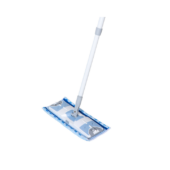As much revenue as possible in the bank is key to corporate success. So, track your spending down to the line item. It can be overwhelming for smaller organizations, but with the appropriate tools and attitude, effective spend management can be achieved. How do you collect and contextualize spending data? What happens if you don’t?
Today, we’re discussing expenditure management’s finer elements and the best ways to optimise it to organise your data. These tactics can be adopted immediately or gradually. They will all help to unify buyers, approvers, and finance teams, reduce excess and rogue spending, and improve expenditure visibility.
What you’ll learn from this article:
- Spend control and why it matters to your finances
- How better effective spend management can help your procurement team
- Five methods to enhance cost management today
Defining Spend management.
Spend management categorises, quantifies, sources, and analyses procurement data throughout your company. Effective Spend management is a system of operations that helps finance and procurement teams analyse expenditure data, minimise waste, boost efficiency, and forecast and budget.
Good spend management lets you see how much the firm is spending, where it’s going (by category, location, department, etc.), and how spending affects company growth over time.
Organisations categorise spending
All spending is not equal in spend management. Most firms spend in four categories: Direct, Indirect, Tail, and Rogue. Each category is vital to your spending practice and requires distinct tracking and management approaches. Let’s examine each.
- Direct spend: Your organisation spends for raw materials and items to make products. It accounts for most of your company’s spending.
- Indirect spend: Large-dollar purchases to run the firm are indirect spend. Although not directly related to product cost, these costs are nonetheless relevant. Operating costs, services, maintenance, and technology are indirect.
- Tail Spend: These 80% of purchases account for up to 20% of your procurement budget. These expenses aren’t easily categorised. They may be rare or one-time, with financial values too low for procurement approval. Saving money by managing tail expenditure is difficult, but it pays off.
- Rogue Spend: The hardest to control yet most crucial. Buying outside the procurement procedure is called rogue or maverick spending. This might include corporate card tech purchases or expense report emergency equipment purchases.
Why is Spend Management Strategy Important?
“Watch the pennies, and the bucks will look after themselves” An old saying, but a good cost-control principle. Spend management is critical for controlling procurement costs, from huge capital expenditures to little incidentals.
As mentioned above, “pennies”—small, hard-to-track transactions that make up a large part of your spending—are the most harmful. To control spending, track these smaller purchases and consolidate them for stronger leverage.
Wasteful spending can be reduced by good spend management. It might reveal redundancies, unused software, unintentional orders, lost payments, and administrative errors that cost your firm time and money. With complete visibility, you can pay early and get supplier savings.
Impact of poor expenditure management strategy
Running a business without a effective spend management strategy is like putting home spending on a credit card without checking the statement. Without conscious spend limitations, you may stay profitable, but you won’t know when or how close you are to the brink.
After a crisis or business interruption, companies, especially rising ones, may prioritise spend control. Budget overruns, cash flow fluctuations, supply chain management challenges, and consumer confidence can destroy a corporation if these issues persist.
Only by controlling spending can you deliver on your commitments, develop your workforce, improve your products, and weather economic storms.
How spend management boosts procurement
Procurement prioritises cost reduction and savings. Intelligent spend management achieves this goal and improves procurement in numerous ways:
- Systems streamline purchases, making requests faster and easier.
- Preferred vendor sourcing speeds up evaluation, negotiation, and execution.
- Better supplier management reduces busywork, freeing up teams to work on bigger procurement projects.
- Inventory management improves supply chain and manufacturing alignment, eliminating last-minute materials requests and production delays.
Top 5 successful cost management strategies
Process improvement takes time. You can gradually integrate various modest, effective tactics into your management practises and bring teams up to speed.
Here are five simple ways to improve your procedure and better manage company spending:
1. Strategically source
One of the easiest and most effective methods to save money and reduce risk is to strengthen supplier relationships.
Start by gathering data about your company’s contracts and suppliers. Ask department heads for their top 10 or 15 vendors. After collecting and centralising this data (in a spreadsheet), you can find overlaps like:
- Contractors with one supplier
- Separate departments employ similar tools
- Buying common supplies twice
- Software licences or tools that auto-renew
These easy discoveries can help your company narrow its supplier list to a favoured list. After, you can use:
- Better price and volume discounts
- Better preferred supplier contracts
- Lower invoice processing and payment costs
2. State your spending process
Clear guidelines are needed to get purchasers and stakeholders to comply. Setting spending standards and guardrails in your organisation is the first step to building a spend control strategy.
Simple, well-defined spending guidelines are fine. Spending parameters include:
- Where and how customers can make minor purchases (curated catalogue, approved vendor list).
- Who can submit purchase orders.
- What purchasing thresholds and approval processes exist based on dollar value, department, etc.
3. Standardise approvals
After determining spending guidelines, you require repeatable purchase approval workflows. IT, Security, Legal, and Finance may need to approve purchases, depending on the type.
Good approval process steps include:
- Standardising new requisition intake forms. Include all relevant details on the requisition form to review and close the agreement.
- Determining when and how approvers should handle purchase requisitions and who can start the process.
- Specifying department approval criteria. Specific requirements may include:
- Legal wording or evaluation for new supplier contracts or special clearance for multi-year contracts.
- IT needing hardware specs for buying.
- InfoSec requires provider questionnaires before installing new software or peripherals.
- Finance negotiating contracts over a specific sum.
- Developing a communication plan for requisition concerns or additional information.
- Adding purchases to your spend management system after close to track renewals, price, and contract conditions.
Create a simple, repeatable procedure so stakeholders always know where they stand, reducing rogue and unrecorded expenditure.
4. Track and assess Spend
First, gather all contracts and spending in one place and develop a mechanism for adding new transactions to the tracking system. The data can then be used to forecast, budget, and analyse spend. With complete, real-time data, you can:
- Locate spending above budgets by location, category, department, or other factors.
- Streamline procurement and purchase to save money.
- Create effective KPIs to track company spending and revenue targets.
- To get the greatest deals on goods and services, benchmark prices and analyse suppliers.
- Prepare financial statements and audits faster and with fewer steps.
5. Process automation
Effective Spend management and procurement software can relieve procurement, accounts payable, and finance as your company grows. By automating the procure-to-pay process, you can save money on labour, errors, and early-pay discounts.
Spend management solutions help systematise your purchase process and provide benefits like:
- Automated purchase order approvals in hours instead of weeks. Approval, purchase, receipt, and reconciliation are easier with this streamlining, which can speed up manufacturing and distribution.
- Completely automated invoice processing and connected payments that save time and eliminate errors.
- Automated category management and spend reporting for real-time, detailed purchase and contract insight.

















